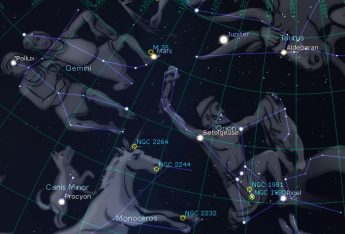This Week’s Sky at a Glance, 2024 Sept 7 – Sept 14
This Week’s Sky at a Glance, 2024 Sept 7 – Sept 14
This is the time of year when the evening sky seems static; the stars appear to be in the same place night after night in twilight. As you can see below, the Sun sets about two minutes earlier each evening. With reference to the stars Earth rotates once every 23 hours, 56 minutes and 4 seconds; a sidereal day. But since our clocks are based on a 24-hour mean solar day rather than the sidereal day, the stars rise about 4 minutes earlier each evening. The rate of earlier sunsets this time of year cancels half of that. Although the stars rise earlier we also see them sooner. That is a bonus because many of the finest objects to observe in a telescope are prominent now, particularly the Milky Way.
The opposite occurs in spring when the later sunsets add to the earlier rising of stars. The constellations seem to fly past over a month or two, much to the chagrin of those who delight in observing the distant galaxies that abound in those constellations. Earth’s motion around the Sun results in many of the constellations being seasonal. For example, we currently see Orion in the southeast before sunrise. Come January it will be there after sunset and it will stick around in the evening sky until mid-spring. Those constellations near the north are circumpolar, meaning they never set and we see them year round. There are 22 constellations in the southern hemisphere sky that we see no part of at all from New Brunswick.
This Week in the Solar System
Saturday’s sunrise in Moncton is at 6:47 and sunset will occur at 7:45, giving 12 hours, 58 minutes of daylight (6:53 and 7:49 in Saint John). Next Saturday the Sun will rise at 6:56 and set at 7:31, giving 12 hours, 35 minutes of daylight (7:02 and 7:36 in Saint John).
The Moon is at first quarter on Wednesday, riding low in the south at sunset near the winter solstice point of the ecliptic. Venus sets an hour after sunset so catch it in early twilight when it is a fist-width above the horizon. How soon can you see it with just your eyes? Saturn is at opposition on Sunday, rising at sunset and setting around sunrise. Jupiter rises in the late evening, and in the morning you can see Orion in the southeast about to spike it with his tennis racquet. Early risers can catch Mars within the same binocular view as the M35 star cluster in Gemini. Just past greatest elongation in the morning sky, Mercury is brightening and it sits just to the left of Regulus on Monday. If you live in a rural area, this week look for the subtle wedge of zodiacal light running from the eastern horizon up toward the Pleiades an hour or more before sunrise.
The Saint John Astronomy Club meets in the Rockwood Park Interpretation Centre on September 7 at 7 pm, and the Fredericton Astronomy Club meets in the UNB Forestry-Earth Sciences Building on Tuesday at 7 pm.

